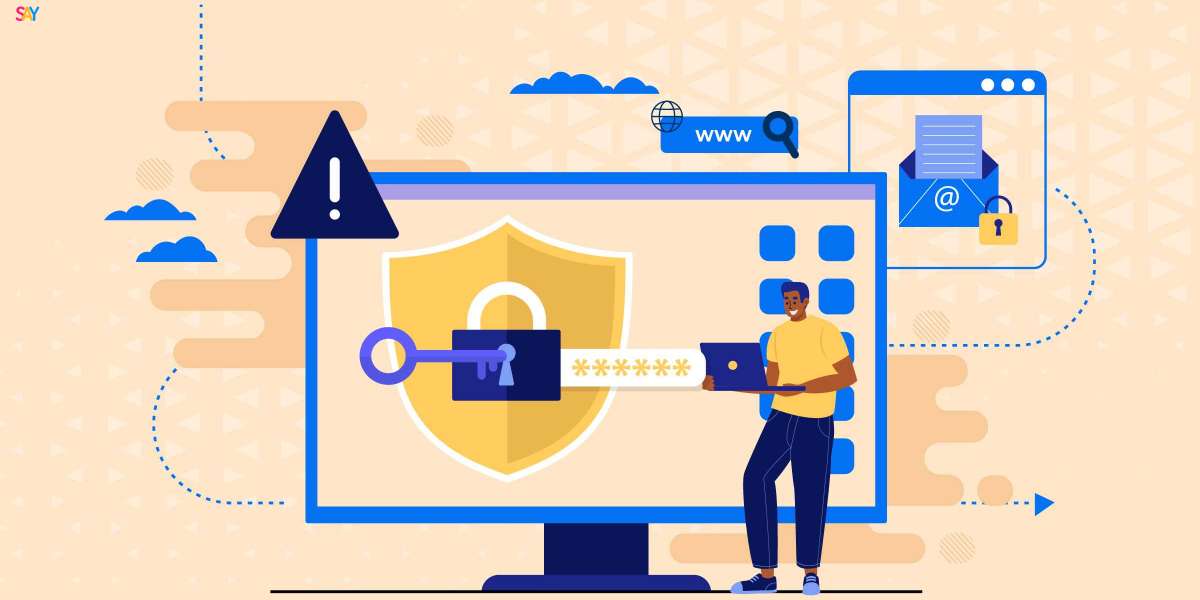Centralized User Authentication and Authorization is a critical component of any organization's security infrastructure. By implementing a centralized system, businesses can ensure that user access to various resources is controlled and monitored effectively. This helps in mitigating potential security risks and preventing unauthorized access to sensitive data.
One of the key benefits of centralized user authentication and authorization is the ability to streamline the management of user accounts. Instead of having separate credentials for each application or system, a centralized system simplifies the process by providing a single set of login credentials. This not only reduces the burden on users to remember multiple usernames and passwords but also eases the workload for administrators in terms of user provisioning and de-provisioning.
Overall, centralized user authentication and authorization enhances security measures by providing a consolidated approach to managing user access across the organization.
• Centralized user authentication and authorization ensures controlled and monitored access to resources
• Mitigates potential security risks and prevents unauthorized access to sensitive data
• Streamlines the management of user accounts by providing a single set of login credentials
• Reduces the burden on users to remember multiple usernames and passwords
• Eases the workload for administrators in terms of user provisioning and de-provisioning
• Enhances security measures by providing a consolidated approach to managing user access across the organization
Streamlining User Provisioning and De-Provisioning Processes
The process of provisioning and de-provisioning user accounts can be a time-consuming and complex task for many organizations. Inefficient procedures not only lead to wasted resources but also increase the risk of security breaches. Streamlining these processes is crucial to ensure efficient and secure user management.
By streamlining user provisioning, organizations can automate the creation of user accounts, assignment of appropriate permissions, and provisioning of necessary resources. This eliminates manual intervention and reduces the risk of errors or delays in granting access to users.
Additionally, streamlining de-provisioning processes allows organizations to promptly revoke access privileges and remove user accounts when they are no longer needed, mitigating the risk of unauthorized access to sensitive information. Implementing streamlined provisioning and de-provisioning procedures ultimately enhances efficiency, reduces administrative burden, and strengthens security measures.
Enhancing Security Measures for Data and Resources
Data and resources are the lifeblood of any organization, making their security of utmost importance. Enhanced security measures play a crucial role in safeguarding sensitive information and preventing unauthorized access or data breaches. By implementing robust security protocols, organizations can ensure the integrity and confidentiality of their data and resources, instilling trust among stakeholders and customers.
One effective way to enhance security measures is through the implementation of multi-factor authentication (MFA) mechanisms. MFA adds an extra layer of protection by requiring users to provide multiple credentials, typically a combination of something they know (e.g., a password), something they have (e.g., a smart card or a mobile device), or something they are (e.g., biometric data). This approach significantly reduces the risk of unauthorized access even if one factor is compromised. By implementing MFA, organizations can strengthen their security posture and mitigate the risks associated with stolen or weak passwords, thereby fortifying the protection of their valuable data and resources.
Simplifying User Access and Password Management
One of the key challenges faced when it comes to enterprise-wide identity and access management is the complexity and inefficiency that often accompany these processes. Without a streamlined approach in place, organizations can find themselves dealing with numerous access requests and password-related issues daily. This not only poses a significant strain on IT resources but also increases the risk of security breaches due to human error or weak password practices.
To address this issue, businesses are increasingly turning to automated solutions that simplify user access and password management. These tools offer centralized control and administration of user credentials, allowing organizations to easily grant or revoke access privileges based on user roles or job requirements.
By implementing such systems, companies can reduce the burden on IT staff, improve productivity, and strengthen security measures by enforcing password complexity requirements and enabling multi-factor authentication.
Implementing Role-Based Access Control Systems
Role-based access control systems (RBAC) play a crucial role in ensuring efficient and secure user access to data and resources within an organization. By implementing RBAC, organizations can define and assign specific roles to their users based on their job responsibilities and access requirements. This approach eliminates the need for individually managing access permissions for each user and instead allows for the creation of role-based profiles that can be easily assigned and revoked as needed.
The key advantage of RBAC lies in its ability to simplify user access management. With RBAC, organizations can consolidate access control rules, permissions, and user roles into a centralized system. This centralized approach not only streamlines the provisioning and de-provisioning processes but also enhances the overall security posture of the organization. RBAC enables organizations to ensure that users only have access to the resources they need to perform their job functions, reducing the risk of unauthorized access or breaches.
Additionally, RBAC helps organizations meet regulatory compliance requirements by providing a clear and auditable trail of user access and permissions. Overall, implementing RBAC can greatly enhance an organization's access control practices and contribute to a robust security framework.
Ensuring Compliance with Regulatory Requirements
In today's digital age, organizations are faced with increasingly stringent regulatory requirements when it comes to protecting sensitive data and ensuring user privacy. Compliance with these regulations is not only essential for legal reasons but also for maintaining the trust and confidence of customers and clients. One of the critical aspects of ensuring compliance is implementing robust security measures that safeguard data and resources from unauthorized access or breaches.
Organizations must establish comprehensive policies and procedures that align with industry-specific regulations such as the General Data Protection Regulation (GDPR) or the Health Insurance Portability and Accountability Act (HIPAA). These policies should outline the specific requirements for maintaining data integrity, confidentiality, and availability.
In addition, organizations need to continuously monitor and audit their systems to identify any vulnerabilities or gaps in compliance, promptly taking action to rectify any issues that may arise. By diligently adhering to regulatory requirements, organizations demonstrate their commitment to safeguarding sensitive information and mitigating potential risks.
FAQ
What is centralized user authentication and authorization?
Centralized user authentication and authorization is a system that centralizes the management of user identities and permissions across various applications and systems. It ensures that users are granted access to the appropriate resources based on their roles and responsibilities within the organization.
Why is centralized user authentication and authorization important for ensuring compliance with regulatory requirements?
Centralized user authentication and authorization plays a crucial role in compliance as it allows organizations to enforce strong access controls, monitor user activity, and maintain audit trails. This ensures that only authorized individuals have access to sensitive data, reducing the risk of unauthorized access and potential compliance violations.
How can user provisioning and de-provisioning processes be streamlined?
User provisioning and de-provisioning processes can be streamlined by implementing automated workflows and self-service portals. These enable efficient onboarding and offboarding of users, ensuring that access to resources is granted or revoked promptly when needed. This helps organizations meet regulatory requirements regarding timely access management.
What are some security measures to enhance protection for data and resources?
Some security measures to enhance protection for data and resources include strong encryption, regular security assessments, access controls, intrusion detection systems, and data loss prevention mechanisms. These measures help safeguard sensitive information, mitigate risks, and demonstrate compliance with regulatory requirements.
How can user access and password management be simplified?
User access and password management can be simplified through the use of single sign-on (SSO) solutions, password management tools, and self-service password reset options. These streamline user authentication processes, reduce the burden on IT staff, and improve user experience while maintaining compliance with regulatory requirements.
What is role-based access control (RBAC) and how does it contribute to compliance?
Role-based access control (RBAC) is a method of managing user permissions based on their assigned roles within an organization. RBAC ensures that users only have access to the resources necessary for their job functions, reducing the risk of unauthorized access and potential compliance breaches. By aligning access controls with job roles and responsibilities, RBAC helps organizations demonstrate compliance with regulatory requirements.
How can organizations ensure compliance with regulatory requirements?
Organizations can ensure compliance with regulatory requirements by implementing centralized user authentication and authorization systems, streamlining user provisioning and de-provisioning processes, enhancing security measures, simplifying user access and password management, and implementing role-based access control systems. These measures help organizations establish robust security controls, enforce access policies, and meet the compliance standards set by regulatory authorities.




